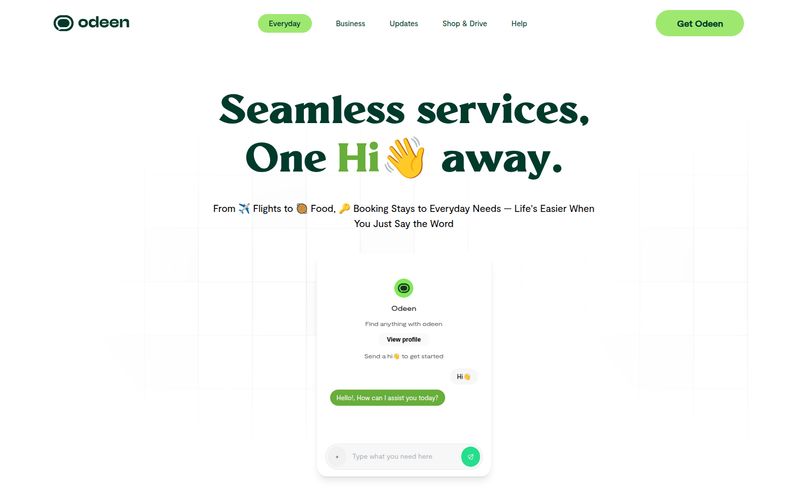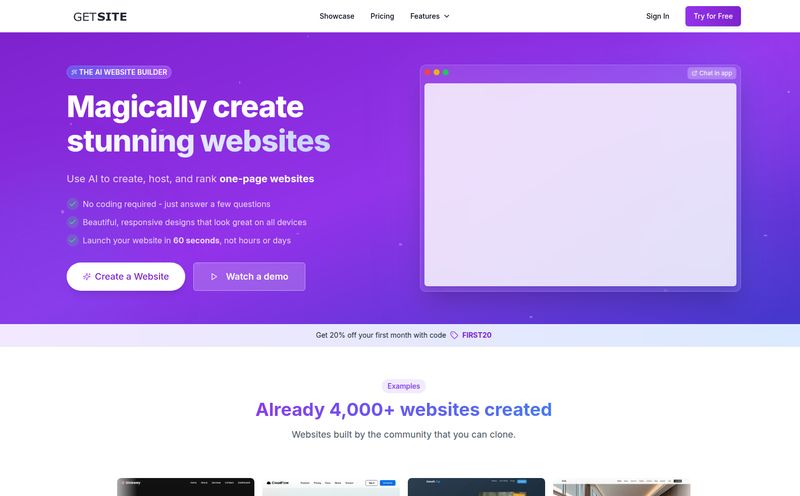We've all been on the receiving end of a terrible marketing email. You know the one—it screams “HELLO [FirstName]” and then proceeds to offer you a discount on something you bought last week. Or worse, something you'd never, ever buy. It’s the digital equivalent of getting junk mail for a lawn you don't have.
For years, we in the SEO and traffic-gen world have been chanting the mantra of personalization. But actually doing it? That's another story. It often feels like you need a full-time data analyst and a team of wizards to pull it off correctly. The promise of AI in marketing has always been to be that wizard, that analyst, that co-pilot who can sift through mountains of data and find the golden nuggets. I've been hearing some chatter about a platform called Enalito that claims to be exactly that for D2C brands. So, naturally, I had to see what the fuss was about.
So What Exactly is Enalito?
At its heart, Enalito isn’t just another email service provider. You’ve got a dozen of those already. I’d describe it more as an intelligence layer that sits on top of your eCommerce store. Its whole reason for being is to use artificial intelligence to understand what your customers actually want, sometimes before they do. It’s built to automate your email marketing, sure, but also to personalize the entire shopping experience based on customer behavior.
Think of it like this: a standard email platform is like a megaphone. You can shout your message to a crowd. Enalito aims to be more like a skilled concierge, having quiet, relevant conversations with each customer individually, at scale. It’s designed to help eCommerce stores attract, keep, and grow their customer base by getting smarter with every click and every purchase.

Visit Enalito
The Core Features That Caught My Eye
A features list is just a features list until you see how it can actually change your workflow. A few things on Enalito's spec sheet really stood out to me as a long-time marketing guy.
True AI-Powered Segmentation
Okay, every platform talks about segmentation. But usually, that just means you’re manually creating lists based on simple rules: “people who bought Product A,” or “people who haven't opened an email in 90 days.” That's fine, but it's basic. Enalito's pitch is that its AI does the heavy lifting, creating dynamic segments based on behaviors. We're talking about things like browsing patterns, predicted lifetime value, and cart abandonment intent. It’s the difference between grouping people by the color of their shirt and grouping them by where they're likely to go next. Pretty powerful stuff.
I once had a client who spent weeks trying to build a “high-value customer” segment. They pulled spreadsheets, ran VLOOKUPs... it was a mess. A tool that automates this and keeps it constantly updated? That’s not just a time-saver, it’s a strategy-enabler.
Automating the Entire Customer Journey
“User journey automation” sounds like corporate jargon, I get it. But what it means here is creating a series of communications that feel natural and responsive. This goes way beyond a simple welcome series. We’re talking about sophisticated flows for winning back customers who have gone cold, upselling to recent buyers with complementary products, and celebrating customer milestones. Because it’s an omnichannel platform, this isn’t just confined to email either. It’s about creating a consistent, personalized experience whether they’re reading an email or browsing your site. That’s the dream, isn’t it?
Personalization That Goes Beyond [FirstName]
If I see one more article celebrating the use of a first name tag as “personalization,” I might lose it. True personalization is about content. It’s about showing someone product recommendations they’ll genuinely love, not just your best-sellers. Enalito does this with dynamic product blocks in emails, but the real kicker for me is the on-site personalization. This means the website itself can change for different visitors, showing them banners, pop-ups, and product sorts that are relevant to them. This is where you move from just marketing better to actually selling better.
Let's Talk Money: The Enalito Pricing Breakdown
Alright, this is the part everyone secretly scrolls down to first. How much does this AI brain cost? Enalito uses a tiered pricing model, which I appreciate. It lets you grow into the platform. There are a lot of tiers, but here's a snapshot of the structure:
| Plan | Price / Month | Key Limits | Good For |
|---|---|---|---|
| Free | $0 | 250 Contacts / 1k Emails | Testing the waters |
| Starter | $49 | 2.5k Contacts / 25k Emails | Small, growing stores |
| Growth | $300 | 30k Contacts / 200k Emails | Established stores needing advanced features |
| Scale | $1,000 | 100k Contacts / 1M Emails | Large-scale operations |
Note: This is just a sample; they have several other tiers in between these.
My take? The free plan is generous enough to actually try the core features. The lower-paid tiers are competitive. The big jump happens when you hit the $300/month plan, which is where you unlock the really juicy stuff like Onsite Personalization. Also, be aware of the fine print: “Every additional 100K Emails & 10K Contacts above your plan limit Costs You Additional $100.” That's important to keep in mind for campaigns that might go viral.
The Good, The Bad, and The AI-Dependent
No tool is perfect, right? Here’s my honest breakdown.
The good is obvious. The deep focus on AI for behavioral marketing is a massive advantage. It's built for eCommerce, so you're not paying for a bunch of B2B features you'll never use. And the omnichannel approach is how modern marketing should work.
On the flip side, this isn't a plug-and-play solution. The provided docs mention a potential learning curve, and I believe it. To get your money's worth, you need to understand your strategy and be willing to dive into the settings. Also, and this is a big one, its effectiveness is completely dependent on the quality of your data. The old saying garbage in, garbage out has never been more true than with AI. You can't expect the platform to work miracles if your product data is a mess or your tracking is broken. You have to be an active participant; you can't just set it and forget it.
Who Is Enalito Actually For?
After looking it all over, I have a pretty clear picture of the ideal Enalito user. This is for the D2C or Shopify store owner who has graduated from the basics. You're already getting traffic, you have a decent-sized customer list, and you've realized that batch-and-blast emails just aren’t cutting it anymore. You know you should be doing more with segmentation and personalization, but you don't have the time or the in-house expertise to do it manually.
It's probably not for someone launching their first store tomorrow. And it's likely not the right fit for a content blog or a service-based business. Its DNA is pure eCommerce.
My Final Take
So, is Enalito the real deal? In my opinion, for the right business, it looks incredibly promising. It represents the shift from simply doing email marketing to building an intelligent customer communication system. It’s an investment, not just in monthly fees but in the time it takes to learn and implement it strategically.
If you're tired of shouting with a megaphone and are ready to start having smarter conversations with your customers, Enalito is definitely worth putting on your shortlist. It feels like one of those tools that, once you've integrated it into your workflow, you'll wonder how you ever managed without it.
Frequently Asked Questions about Enalito
- Is Enalito good for beginners?
- It's a powerful tool with a bit of a learning curve. While a motivated beginner could learn it, it's best suited for those who already have some experience with email marketing and understand concepts like customer segmentation.
- What kinds of businesses use Enalito?
- Its features are tailored specifically for Direct-to-Consumer (D2C) and eCommerce businesses, especially those on platforms like Shopify. The goal is to increase customer LTV and conversion rates.
- Does Enalito have a free plan?
- Yes, it offers a free plan that includes up to 250 contacts and 1,000 emails per month, which is a great way to explore its basic features and interface.
- How much does Enalito cost?
- Pricing is tiered based on the number of contacts and emails sent. It starts with the free plan and scales up through various paid tiers, from $29/month to over $1,500/month for very large stores.
- What makes Enalito different from Mailchimp or Klaviyo?
- While they all operate in the same space, Enalito's key differentiator is its deep and central focus on AI for automating behavioral segmentation, product recommendations, and even on-site personalization, aiming for a more holistic, intelligent marketing system.
- Do I need to be a data expert to use it?
- Not at all. You don't need to be a data scientist, but you do need to understand your own marketing goals and be willing to monitor the AI’s performance to ensure it aligns with your strategy. Clean store data is also a big help.



